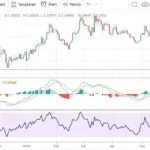The global economy in 2025 has entered a period of uncertainty marked by slower growth, high interest rates, and cautious investor sentiment. For many industries, the tightening financial climate has meant layoffs, lower valuations, and shrinking venture funding — and fintech is no exception.
Yet, despite the turbulence, fintech firms are proving remarkably resilient. From streamlining operations to pivoting business models, many are not only surviving but positioning themselves for long-term success once the economy rebounds.
1. The Economic Backdrop: A Challenging Year for Growth
2025 has seen a combination of economic headwinds:
- Rising interest rates have made borrowing costlier for startups.
- Reduced venture capital activity, as investors favor profitability over hypergrowth.
- Persistent inflation impacting consumer spending patterns.
- Geopolitical tensions disrupting global markets and cross-border finance.
These pressures have forced fintechs — particularly younger startups — to rethink growth strategies and focus on sustainability.
2. Shifting Focus from Growth to Profitability
In the previous decade, fintech was synonymous with rapid expansion and “growth at all costs.” But in 2025, the narrative has changed.
Investors now prioritize profitability, unit economics, and cash flow discipline. Startups that once relied on continuous funding rounds are cutting costs and optimizing operations.
For example:
- Digital lenders are tightening credit standards to reduce default risk.
- Payment firms are introducing subscription-based revenue models.
- Wealthtech platforms are focusing on premium services and advisory fees instead of chasing mass acquisition.
This strategic pivot has led to leaner, more sustainable business models capable of withstanding economic downturns.
3. The Rise of Strategic Partnerships
Fintechs are increasingly forming alliances to weather the storm. Collaborations between banks and fintechs, once seen as competitors, have accelerated in 2025.
- Banks gain agility and innovation through fintech partnerships.
- Fintechs gain stability, customer reach, and regulatory credibility through established institutions.
Notable examples include co-branded digital wallets, embedded finance partnerships, and AI-powered risk management tools offered through joint ventures.
These partnerships help fintechs access broader customer bases while reducing marketing and compliance costs — a crucial advantage during a slowdown.
4. Diversification and Innovation Amid Uncertainty
Economic challenges often spark creativity, and fintech is no different. To stay afloat, firms are diversifying their offerings and exploring new verticals:
- Embedded finance is growing rapidly, allowing fintechs to integrate services like lending and payments into non-financial platforms.
- RegTech and InsurTech are gaining traction, as companies seek compliance and risk management tools to handle regulatory complexity.
- AI and automation are being leveraged to cut costs, improve decision-making, and personalize user experiences.
These innovations are helping fintechs maintain relevance and capture new revenue streams even as traditional demand slows.
5. A Focus on Financial Inclusion
While the slowdown has hurt mature markets, it has also highlighted opportunities in emerging economies. Fintechs serving underbanked populations in regions such as Southeast Asia, Africa, and the Middle East continue to see strong growth.
Low-cost digital banking, micro-lending, and cross-border payment solutions remain in high demand. By addressing real-world financial gaps, these fintechs are less vulnerable to market volatility and more aligned with long-term social and economic priorities.
6. Prudent Cost Management and Workforce Optimization
The fintech sector has seen a wave of consolidation and restructuring in 2025. While some firms have scaled back operations or merged, others are streamlining processes through automation and remote work.
Companies that adapt quickly — by cutting non-essential spending, renegotiating vendor contracts, and investing in efficiency-enhancing technology — are proving the most resilient.
7. Investor Confidence: A Selective Rebound
Though venture capital funding in fintech dropped significantly in 2024, signs of stabilization are emerging in 2025. Investors are more selective, favoring companies with clear paths to profitability and strong regulatory compliance.
Areas like AI-driven financial tools, cybersecurity, RegTech, and sustainable finance are attracting renewed interest. This suggests that while easy money is gone, smart money is returning — backing fintechs that can deliver tangible value.
Conclusion
The 2025 economic slowdown has tested the fintech industry’s resilience like never before. But rather than collapsing, the sector is evolving — becoming more disciplined, collaborative, and innovation-focused.
By prioritizing efficiency, building trust through partnerships, and aligning with consumer needs, fintechs are proving they can not only survive challenging economic cycles but emerge stronger from them.
In essence, this slowdown is not the end of fintech’s rise — it’s the reset that will define the next phase of sustainable growth in digital finance.













